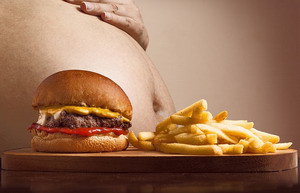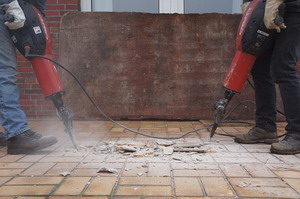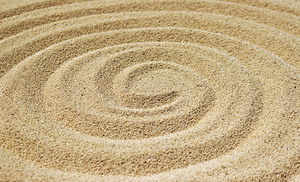 A week ago Ellen and I had some lab work done to check our fasting insulin and hemoglobin A1c. We regularly test our blood sugar and ketones at home with a finger stick blood test. There is no at-home test for insulin, but I just found out there is a new at-home test for A1c now available. Why are we concerned with these tests? As I was detailing in the last two newsletters, blood sugar issues are the basic underlying cause of the chronic disease epidemic that kills more Americans than everything else combined. More important is the massive amount of suffering it causes before killing us. I am not fond of suffering personally. That is why I am concerned with doing what is necessary to avoid these conditions, and that means getting my insulin levels down.
A week ago Ellen and I had some lab work done to check our fasting insulin and hemoglobin A1c. We regularly test our blood sugar and ketones at home with a finger stick blood test. There is no at-home test for insulin, but I just found out there is a new at-home test for A1c now available. Why are we concerned with these tests? As I was detailing in the last two newsletters, blood sugar issues are the basic underlying cause of the chronic disease epidemic that kills more Americans than everything else combined. More important is the massive amount of suffering it causes before killing us. I am not fond of suffering personally. That is why I am concerned with doing what is necessary to avoid these conditions, and that means getting my insulin levels down.
 As usual, my results were not great but not bad. My A1c number was 5.6, which is the top end of normal for long-term blood sugar levels. My insulin levels were 17.5, which is way higher than healthy, but lower than what the lab thinks is the top of normal. The lab says up to 24.9 is normal, however, the healthy range is 3 to 5. The problem with the numbers on lab tests is the word normal. Normal is the average of everybody that had this test the previous year. Since 85% of Americans have metabolic syndrome, do you think maybe the average lab tests they have might not be healthy? Doctors concerned with patient health have to deal with this all the time — normal does not equal healthy. The average American is not healthy. Setting your goal to be average does not cut it if you want to avoid chronic disease.
As usual, my results were not great but not bad. My A1c number was 5.6, which is the top end of normal for long-term blood sugar levels. My insulin levels were 17.5, which is way higher than healthy, but lower than what the lab thinks is the top of normal. The lab says up to 24.9 is normal, however, the healthy range is 3 to 5. The problem with the numbers on lab tests is the word normal. Normal is the average of everybody that had this test the previous year. Since 85% of Americans have metabolic syndrome, do you think maybe the average lab tests they have might not be healthy? Doctors concerned with patient health have to deal with this all the time — normal does not equal healthy. The average American is not healthy. Setting your goal to be average does not cut it if you want to avoid chronic disease.
 My lab tests tell me that I have insulin resistance. I already know that simply because no matter how much I might diet, I don’t lose real weight. I can lose 10 pounds of water, but this comes right back within a couple of days when I eat any carbs. This is a big sign of insulin resistance. As long as your insulin levels are high, your body will not burn your fat for energy. Insulin is a growth hormone for fat cells. It blocks fat burning. Unfortunately, after too many years of resistance, the inflammation that results in the fat cells causes a lot of internal chemical damage that is difficult to reverse. The cells get overfilled with fat and they need the resistance to keep out any more fats, or proteins, or even carbs. Insulin acts to open the doors in cell walls so they will let in sugars, proteins, and fats. Most folks focus on just the sugar part of the equation, but in reality, insulin pumps cells up with everything. Most cells will gradually use this stuff up so they can do their jobs, but white fat cells’ main job is to just sit there and store fat. Brown fat generates heat to keep us warm. Brown fat is white fat with lots of mitochondria added to it. It is the mitochondria that get damaged by inflammation and are unable to reproduce to replace themselves.
My lab tests tell me that I have insulin resistance. I already know that simply because no matter how much I might diet, I don’t lose real weight. I can lose 10 pounds of water, but this comes right back within a couple of days when I eat any carbs. This is a big sign of insulin resistance. As long as your insulin levels are high, your body will not burn your fat for energy. Insulin is a growth hormone for fat cells. It blocks fat burning. Unfortunately, after too many years of resistance, the inflammation that results in the fat cells causes a lot of internal chemical damage that is difficult to reverse. The cells get overfilled with fat and they need the resistance to keep out any more fats, or proteins, or even carbs. Insulin acts to open the doors in cell walls so they will let in sugars, proteins, and fats. Most folks focus on just the sugar part of the equation, but in reality, insulin pumps cells up with everything. Most cells will gradually use this stuff up so they can do their jobs, but white fat cells’ main job is to just sit there and store fat. Brown fat generates heat to keep us warm. Brown fat is white fat with lots of mitochondria added to it. It is the mitochondria that get damaged by inflammation and are unable to reproduce to replace themselves.
 How do we correct this condition? Fixing this requires us to put the body into such a deep energy deficit that insulin almost drops to zero and its opposite hormone, glucagon, jumps up and starts pulling fat out of the cells to feed the rest of the body. Glucagon does this by inducing autophagy, where the body starts breaking down unessential parts to use for energy. This is a good thing for a while because the first thing it breaks down are old damaged cells, bacteria, yeast, viruses, scar tissue, and stuff we are better off without. The challenge is to manage the type of stress this puts on the body as this triggers the body to turn off various less important pathways and lower our metabolism. This is much like going into hibernation. We have to keep the body revved up with lots of movement to convince it we are still needing to stay active.
How do we correct this condition? Fixing this requires us to put the body into such a deep energy deficit that insulin almost drops to zero and its opposite hormone, glucagon, jumps up and starts pulling fat out of the cells to feed the rest of the body. Glucagon does this by inducing autophagy, where the body starts breaking down unessential parts to use for energy. This is a good thing for a while because the first thing it breaks down are old damaged cells, bacteria, yeast, viruses, scar tissue, and stuff we are better off without. The challenge is to manage the type of stress this puts on the body as this triggers the body to turn off various less important pathways and lower our metabolism. This is much like going into hibernation. We have to keep the body revved up with lots of movement to convince it we are still needing to stay active.
 Fasting is the traditional old-school method of creating this deep of an energy deficit. Autophagy peaks at about 3 days and then starts to decline almost to zero by day 5. That is about the time insulin and blood glucose reaches their lowest point. As autophagy starts to decline, stem cells start to pour out to replace the tissues that were eaten up with new tissue. Building new tissues is an energy-intensive process, so the body will still demand energy from storage generating good fat-based weight loss (assuming you have excess fat). I have been on many a two-week water fast when I was younger to easily bring down my weight. But back then my general cellular energy production was greater due to much greater numbers of mitochondria in my cells, so fasting was easier to do while working. As we age our energy-producing factories become fewer. So I am trying to design a more efficient way to lower insulin while also emphasizing more autophagy and stem cell production to fight back the consequences of aging.
Fasting is the traditional old-school method of creating this deep of an energy deficit. Autophagy peaks at about 3 days and then starts to decline almost to zero by day 5. That is about the time insulin and blood glucose reaches their lowest point. As autophagy starts to decline, stem cells start to pour out to replace the tissues that were eaten up with new tissue. Building new tissues is an energy-intensive process, so the body will still demand energy from storage generating good fat-based weight loss (assuming you have excess fat). I have been on many a two-week water fast when I was younger to easily bring down my weight. But back then my general cellular energy production was greater due to much greater numbers of mitochondria in my cells, so fasting was easier to do while working. As we age our energy-producing factories become fewer. So I am trying to design a more efficient way to lower insulin while also emphasizing more autophagy and stem cell production to fight back the consequences of aging.
 Looking at all the pathways involved I see that my maximum objectives are reached with about a 4-day fast. If I start out fully in ketosis, everything happening on the first day of the fast has already happened. That leaves the maximum benefit achieved in about 72 hours. But the benefits of a single shot are tiny — maybe 1% of my goal reached. I need to do this over and over to get the results I want and need. What else do I want to achieve?
Looking at all the pathways involved I see that my maximum objectives are reached with about a 4-day fast. If I start out fully in ketosis, everything happening on the first day of the fast has already happened. That leaves the maximum benefit achieved in about 72 hours. But the benefits of a single shot are tiny — maybe 1% of my goal reached. I need to do this over and over to get the results I want and need. What else do I want to achieve?
 A huge key to reducing inflammation in the body is correcting the gut microbiome. Bad guy bugs in the gut cause inflammation throughout the body. We want those guys gone and replaced with good guys. The best way to do that is to feed it gut-soluble fiber foods like jicama and salads. That’s what the good guys eat. We also want to pump in lots of good bacteria. We do this by eating fermented foods like sauerkraut and kimchi. A few people can handle fermented dairy products, but milk protein is usually an allergen for most Americans due to overuse in the diet. Another big help in fighting inflammation is to correct the imbalance in our omega 3 to omega 6 oil ratios in the body. We do this by taking lots of fish or krill oil. Right now I am on a cod liver oil kick. I was adding it to the sardines I was fasting on a month ago.
A huge key to reducing inflammation in the body is correcting the gut microbiome. Bad guy bugs in the gut cause inflammation throughout the body. We want those guys gone and replaced with good guys. The best way to do that is to feed it gut-soluble fiber foods like jicama and salads. That’s what the good guys eat. We also want to pump in lots of good bacteria. We do this by eating fermented foods like sauerkraut and kimchi. A few people can handle fermented dairy products, but milk protein is usually an allergen for most Americans due to overuse in the diet. Another big help in fighting inflammation is to correct the imbalance in our omega 3 to omega 6 oil ratios in the body. We do this by taking lots of fish or krill oil. Right now I am on a cod liver oil kick. I was adding it to the sardines I was fasting on a month ago.
 A third item on my metabolic wish list is metabolic flexibility. That means that the body can adapt to many different energy sources from food quickly. A healthy body should be able to use fats today and carbs tomorrow with no problem. Part of that is being addressed by getting rid of insulin resistance. But metabolic flexibility is just like muscular flexibility — it must be practiced.
A third item on my metabolic wish list is metabolic flexibility. That means that the body can adapt to many different energy sources from food quickly. A healthy body should be able to use fats today and carbs tomorrow with no problem. Part of that is being addressed by getting rid of insulin resistance. But metabolic flexibility is just like muscular flexibility — it must be practiced.
 Okay, this is my wish list: to get rid of insulin resistance and the inflammation driving it; dump my old worn-out cells and freeloading parasites (the unhelpful bacteria, fungus, and viruses); pump up stem cells to replace the old cells with shiny new ones; heal my gut and rebuild a healthy microbiome; and build metabolic flexibility. This all sounds pretty easy, right? Well, I have come up with a plan! Since it needs to be repeated as a cycle for quite a while, I made it fit into a standard week. That makes keeping track of what I am doing easy.
Okay, this is my wish list: to get rid of insulin resistance and the inflammation driving it; dump my old worn-out cells and freeloading parasites (the unhelpful bacteria, fungus, and viruses); pump up stem cells to replace the old cells with shiny new ones; heal my gut and rebuild a healthy microbiome; and build metabolic flexibility. This all sounds pretty easy, right? Well, I have come up with a plan! Since it needs to be repeated as a cycle for quite a while, I made it fit into a standard week. That makes keeping track of what I am doing easy.
Here is my weekly plan:
All my eating will be between the hours of 8:00 am and 4 pm — no snacking after 4:00 pm.
 Monday through Wednesday I’ll eat a Ketobiotic diet: ruminant meats, seafood, eggs, butter, and cod liver oil with fermented & low-carb veggies. I’ll avoid grain-fed meats to reduce inflammatory oils and chemicals. My workout will be Wednesday mornings.
Monday through Wednesday I’ll eat a Ketobiotic diet: ruminant meats, seafood, eggs, butter, and cod liver oil with fermented & low-carb veggies. I’ll avoid grain-fed meats to reduce inflammatory oils and chemicals. My workout will be Wednesday mornings.
Thursday & Friday I’ll eat a biotic fiber fast for autophagy induction and consume just fermented & low-carb veggies and cod liver oil.
Saturday & Sunday I’ll eat concentrated high amino acids plus meats with fat along with fruits, tubers, and legumes. This will start late Saturday mornings after a good muscle workout to empty out the muscles before eating any sugars or carbs.
Monday morning I’ll start back on the Ketobiotic diet.
 So there you have it, my cyclic rejuvenation plan. In my imagination I see myself doing this for about a year to reverse the insulin resistance and rebuild my internal environment. I have a ways to go.
So there you have it, my cyclic rejuvenation plan. In my imagination I see myself doing this for about a year to reverse the insulin resistance and rebuild my internal environment. I have a ways to go.
Take care,
David
